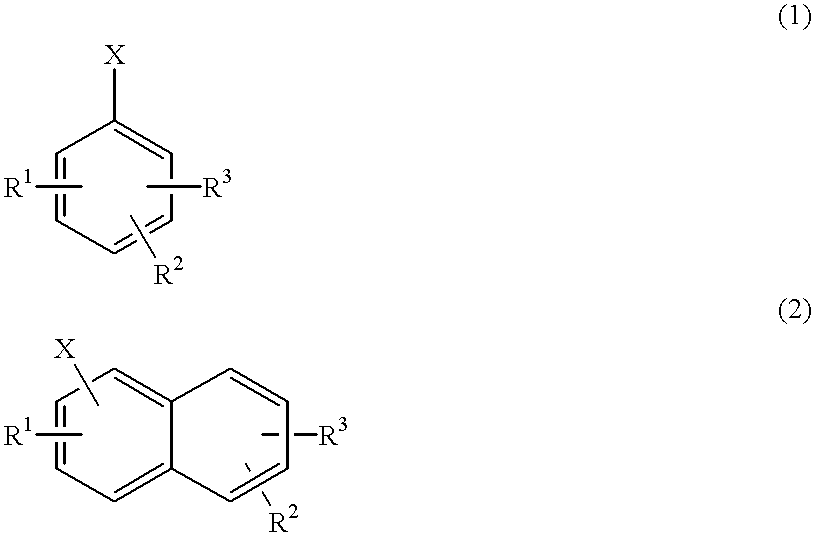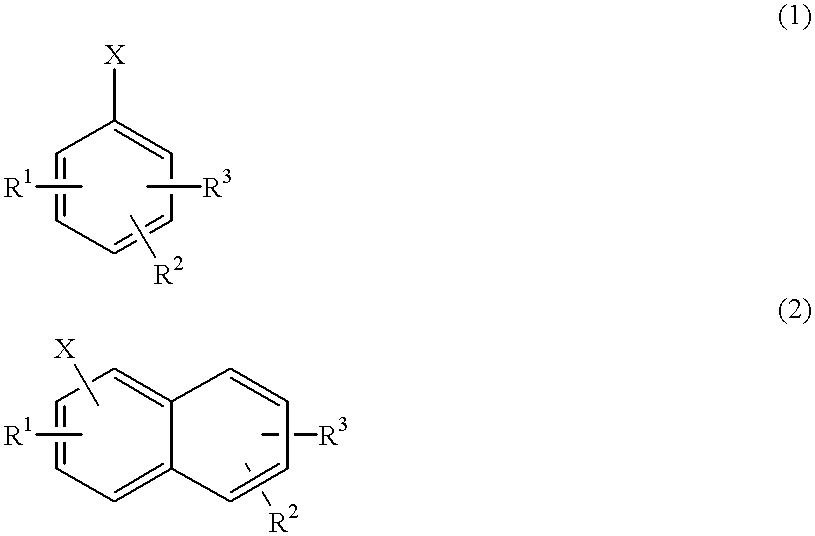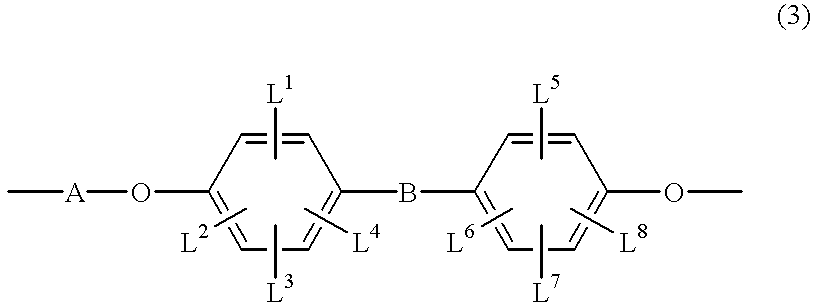Coating solution for forming porous organic film
a technology of porous organic film and coating solution, which is applied in the direction of polyether coating, plastic/resin/waxes insulators, insulating bodies, etc., can solve the problems of not getting finer pore diameter due to foaming agent use, and the throughput is reduced, so as to achieve the effect of lowering the dielectric constan
- Summary
- Abstract
- Description
- Claims
- Application Information
AI Technical Summary
Benefits of technology
Problems solved by technology
Method used
Image
Examples
synthesis example
Synthesis of A)
Into a 500 ml four-necked flask was charged 21.6 g (0.05 mol) of 1,1-bis(4-hydroxy-cyclohexypheyl)cyclohexylidene, 4.0 g of sodium hydroxide, 70.0 g of benzophenone and 50.0 g of toluene, and the mixture was dehydrated under reflux. After completion of the dehydration, 15.6 g (0.05 mol) of dibromobiphenyl was added. Further, a solution prepared by dissolving 0.05 g of cuprous chloride into 5 g of pyridine was added to this, and the mixture was allowed to react for 6 hours at an internal temperature of 185.degree. C. The mixture was cooled to room temperature, then, the reaction solution was added to a solution prepared by mixing 10 g of acetic acid with 600 g of methanol, to precipitate a product. The precipitated crystal was filtrated, washed with a large amount of methanol to obtain a polymer compound, and further, it was dried under reduced pressure for 8 hours at 60.degree. C.
To 4.0 g of thus obtained resin was added 100 ml of tetrahydrofuran, to dissolve the resi...
example 1
Resin A and Resin B obtained in the synthesis examples were dissolved in anisole, so as to give concentrations of 15% and 0.3%, respectively. Then, the solution was filtrated through a 0.2 .mu.m filter to prepared a coating solution.
The resulted coating solution was spin-coated on a 4 inch silicon wafer at a rotation of 2000 rpm, then, pre-baked for 1 minute at 150.degree. C. to remove most of anisole. Then, the product was subjected to heat treatment at 250.degree. C. (thermosetting initiation temperature) for 10 minutes, then, at 350.degree. C. for 30 minutes under nitrogen atmosphere.
The resulted porous film was cut together with the silicon wafer, and the resulted cross surface was vapor-deposited with palladium (deposited palladium film thickness: 1 nm), and the film thickness and pore diameter of cavity generated by the porous structure forming procedure were observed by watching with SEM (S-4700 type, manufactured by Hitachi, Ltd.). The film thickness was about 0.35 .mu.m, an...
PUM
| Property | Measurement | Unit |
|---|---|---|
| boiling point | aaaaa | aaaaa |
| relative dielectric constant | aaaaa | aaaaa |
| relative dielectric constant | aaaaa | aaaaa |
Abstract
Description
Claims
Application Information
 Login to View More
Login to View More - R&D
- Intellectual Property
- Life Sciences
- Materials
- Tech Scout
- Unparalleled Data Quality
- Higher Quality Content
- 60% Fewer Hallucinations
Browse by: Latest US Patents, China's latest patents, Technical Efficacy Thesaurus, Application Domain, Technology Topic, Popular Technical Reports.
© 2025 PatSnap. All rights reserved.Legal|Privacy policy|Modern Slavery Act Transparency Statement|Sitemap|About US| Contact US: help@patsnap.com



